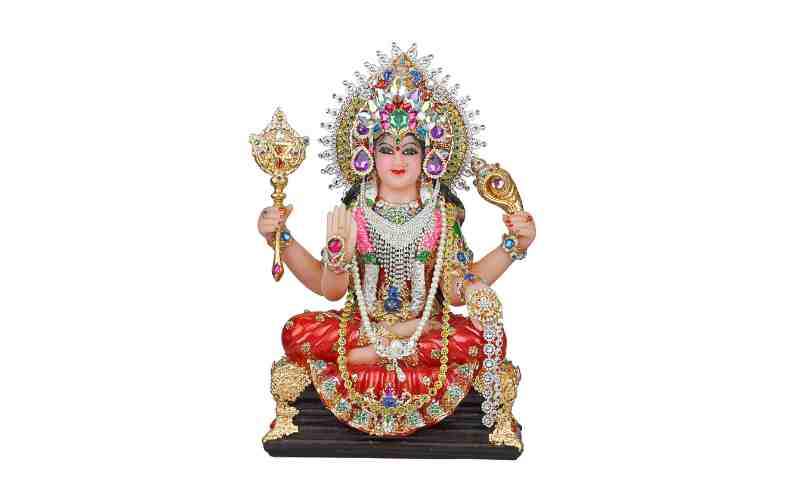The Savitri Upanishad is one of the ancient texts of Hinduism that belongs to the genre of Samanya Upanishads, which deal with the general topics of spirituality and philosophy. It is attached to the Samaveda, one of the four Vedas that are considered the most authoritative scriptures in Hinduism. The Savitri Upanishad is also known as Savitryupanishad or simply Savitri, which means “ray of light” or “sunlight”.
The Theme and Content of the Upanishad
The main theme of the Savitri Upanishad is the Savitri-vidya, or the knowledge of sunlight, which is a symbol of the supreme reality and the source of all existence. The Upanishad describes everything in the universe as a manifestation of the masculine Savitr and feminine Savitri, who are also identified with Brahman, the absolute reality, and Gayatri, the primordial sound and power. The Upanishad elaborates on the Gayatri Mantra, which is a sacred hymn dedicated to Savitr and Savitri, and explains its meaning and significance.
The Upanishad also presents the Advaitic notion of nondual Brahman, which is beyond all names and forms and can be realized only by transcending the mind and senses. The Upanishad teaches two mantras called Bala (Strength) and Atibala (Super Strength), which are meant to meditate on Virat Purusha, the cosmic personification of Brahman, and Om, the universal sound and symbol of Brahman.
The Savitri Upanishad is a short text with 15 verses in some versions, while in other versions it has 28 verses or 5 to 6 chapters with no verse numbers. The text is a mix of prose and poetry, and it draws from various sources such as the Vedas, the Upanishads, the Bhagavad Gita, and other texts on spirituality and yoga.
The Savitr and Savitri as the Source of All
The Upanishad begins by asking two questions: “Who is Savitr? What is Savitri?” It then answers these questions by giving nine examples of masculine-feminine pairs that exemplify the nature of Savitr-Savitri, as shown in the table below:
| Savitr | Savitri |
|---|---|
| Agni (fire) | Prithvi (earth) |
| Varuna (water) | Ap (water) |
| Vayu (air) | Akasha (sky) |
| Yajna (fire-offering) | Chandas (poem meter) |
| Stanayitnu (thunder cloud) | Vidyut (lightning) |
| Aditya (sun) | Dyo (celestial space) |
| Chandra (moon) | Nakshatra (constellation) |
| Manas (mind) | Vac (speech) |
| Purusha (man) | Stri (woman) |
The Upanishad asserts that these pairs are always together, and interdependent, and their mithuna (mating) is a generative source of all creation. They are also manifestations of Savitr-Savitri, who are themselves manifestations of Brahman-Gayatri. The Upanishad says that Savitr is the creative energy, while Savitri is the fuel and matter. They are also the light and sound that pervade all existence.
The Gayatri Mantra and Its Meaning
The Upanishad then explains the meaning and significance of the Gayatri Mantra, which is a sacred hymn dedicated to Savitr-Savitri. The Gayatri Mantra is as follows:
Om bhur bhuvah svah
Tat savitur varenyam
Bhargo devasya dhimahi
Dhiyo yo nah prachodayat
The Upanishad gives different interpretations of each word and phrase of this mantra, based on different levels of understanding. For example, it says that Om is Brahman, bhur is earth, bhuvah is sky, svah is heaven, tat is that, savitur is sun-god, varenyam is adorable, bhargo is splendor, devasya is divine, dhimahi is meditate, dhiyo is intellects, yo is who, nah is our, prachodayat is inspire.
The Upanishad also says that this mantra can be understood as a prayer for enlightenment. It says that by meditating on this mantra, one invokes the light and power of Savitr-Savitri to illumine and inspire one’s intellect and lead one to the realization of Brahman.
The Bala and Atibala Mantras and Their Significance
The Upanishad then teaches two mantras called Bala and Atibala, which are meant to meditate on Virat Purusha and Om, respectively. The Bala mantra is as follows:
Om bhuh purusho ham
Om bhuvah purusho ham
Om svah purusho ham
Om bhur bhuvah svah purusho ham
The Upanishad says that this mantra means “I am the cosmic person in earth, sky, heaven, and all the three worlds”. It says that by meditating on this mantra, one identifies oneself with Virat Purusha, who is the embodiment of Brahman in the universe.
The Atibala mantra is as follows:
Om ityekaksharam brahma
Om ityekaksharam param
Om ityekaksharam jyotih
Om ityekaksharam shantih
The Upanishad says that this mantra means “Om is the one-syllabled Brahman, Om is the one-syllabled supreme, Om is the one-syllabled light, Om is the one-syllabled peace”. It says that by meditating on this mantra, one realizes Om as the essence of Brahman, which is beyond all names and forms.
The Conclusion of the Upanishad
The Upanishad concludes by stating that by practicing the Savitri-vidya, or the knowledge of sunlight, one attains liberation from the cycle of birth and death (samsara) and becomes one with Brahman. It says that such a person is free from all ignorance and bondage, enjoys supreme bliss and peace, sees all beings as himself and himself as all beings, transcends all dualities and distinctions, realizes his own self as the self of all, and abides in his own glory as Brahman.
The Upanishad ends with a prayer for peace in oneself, in one’s environment, and in the forces that act on one. It invokes the blessings of Brahman, the Upanishads, and the Atman for the welfare of all.
Word count: 750
Source: Conversation with Bing, 7/16/2023
(1) Savitri Upanishad – Wikipedia. https://en.wikipedia.org/wiki/Savitri_Upanishad.
(2) Savitri Upanishad – Vyasa Mahabharata. https://www.vyasaonline.com/savitri-upanishad/.
(3) Savitri Upanishad | Vedanta Shastras Library. https://www.shastras.com/upanishads-sama-veda/savitri-upanishad/.





